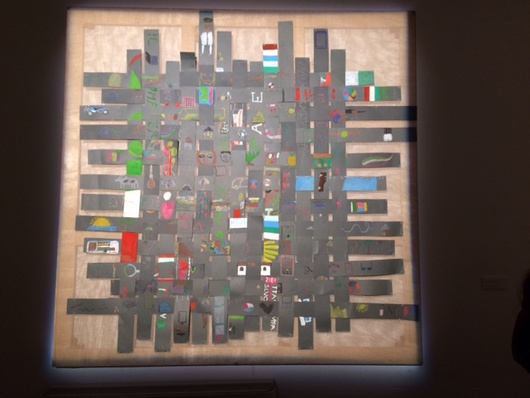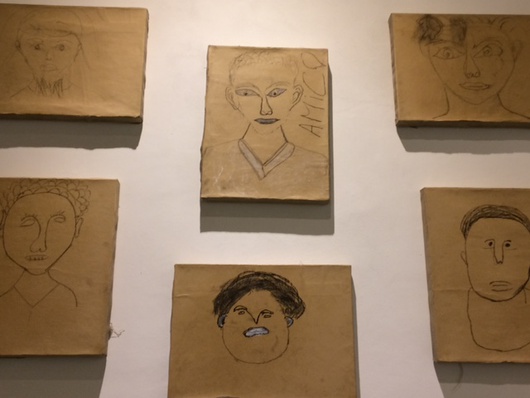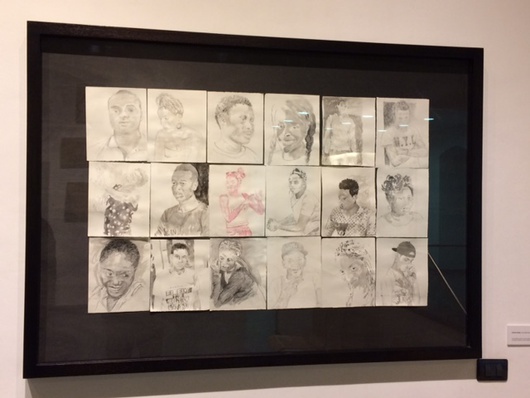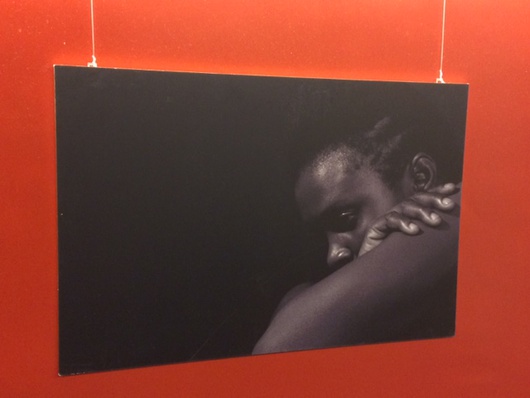![Image for [eng] Odisseo arrives in Palermo and he speaks so many languages.](https://media.cafebabel.com/resized-images/72/38/7d152e8d84548df075a60be6bc3b08dfe55a.jpg)
[eng] Odisseo arrives in Palermo and he speaks so many languages.
Published on
Translation by:
 Silvia De Castro
Silvia De Castro
An exhibition based on cultural integration and social inclusion. Thanks to the project Odisseo arriving alone, created by ItaStra and by the organization "Nuvole", more than a hundred minor migrants have come together, they had just gone ashore in Sicily. Cafèbabel joined the opening of the exhibition.
Let's try to imagine the Odyssey translated into Arabic, Mandingo, Fula, Wolof, Bangla, French and English. To those mythical and fascinating stories add the real and tragic stories of migrants just gone ashore on the Sicilian coasts. Finally, let's transpose this experience into work of art such as photography, painting, graphic art.
The result of this touching polyphony of languages is in the university building of "Sant'Antonio" in Palermo, where it will be possible until the 22 of December to visit the exhibition and attend meetings arranged by the exposition "Odisseo arriving alone". A laboratory lasted six months, but actually the outcome of a ten years work, organized by ItaStra ( Italian School for foreigners) from the University of Palermo and the cultural organization "Nuvole Incontri d'Arte". This event let 106 young migrants, arrived in Italy on their own, 28 schools, different associations and 52 speakers to come together, in a climate of cultural and social integration, in order to shorten any kind of distance. Cafèbabel joined the opening event.
Who is Odisseo?
This project was born from the idea of integrating narration with figurative arts. Protagonists were migrants who were younger than 18, unaccompanied and uneducated. Eight episodes from Homer's poem opened the meetings. Deeds by Itaca's hero are placed side by side to to the stories of migrants, new heros of our times. Just like Odisseo, castaways looking for their own "new" home live a journey full of obstacles and dangers, where death is a ghost ready to reveal itself in any time. After having heard and read the most known episodes from the Poem in their mother tongue, students shared their own experiences, their journeys. Telling about themself in any form of language: from speech, singing, dancing, to figurative art. 
The exhibition
Accompanied by the young Francesco, student in Linguistic and Cultural Mediation, we enter the core of the exhibition. Photographs, works on paper, tableu vivant and hyperrealistic paintings are the nerve of the exhibition realized by boys from the laboratory, helped by artists such as Gaetano Cipolla, Igor Scalisi Palminteri and by the photographer Antonio Gervasi. Charcoal drawings made by young migrants portray people who, because of the journey, are away from their sight but not from their heart. There's the one who portrays his mother, who pictures his father, or the one who portray a friend. People they probably will meet never againg. In another hall, the installation of six monitos let the visitor hear sounds and words, which overlap, forcing who's there to struggle to decode meanings. A metaphor which refers to the need of migrants to be heard and understood . 
New Europeans
«They are the new europeans – the painter Cipolla says – A concept which lot of people haven't understood yet. Diversity is richness, we don't have to be scared about it, but we have to learn and appreciate it." . The artist from Palermo will never forget an episode experienced during the laboratory: « When I asked the boys to draw what they left in their own country, a child who was 14 years came closer and he showed me a drawning with a kalashnikov..."
«I'll always remember the smiles of those kids"
The project saw cultural mediator as an important driving force. Among them we met Ama, a thirty years old Nigerian: " That was a wonderful experience. Full of satisfactions - she told us - I'll always remember the smile of the boys, I shared with them amazing moments". One in particular: " At the end of the laboratory, one of the boys wrote me a letter in which he expressed his affection for me. That was touching". 
Meeting new cultures is priceless
Kiro is Egyptian and 17 years old, he's been living in Italy for two years. He comes closer a little bit embarassed. He sums up his experience with ItaStra this way: «Passing time with others, talking and hearing other languages is a priceless enrichment. I'll always remember my feeling before going on stage in Teatro Biondo to read some quotes taken from the anthology on migrations. Echoes from echoes. I was all sweaty". He smiles.
Inclusion is/and partecipation
This is the motto of the project, and it became a mantra, which was pronounced by the creator of the laboratory, the Itasra teacher Mari D'Agostino, many times: «I'm very glad to see all these people - she says touched- to see all the faces of the boys who spent with us beautiful moments. This is an exhibition of excellence, the vivid example of a multicultural Palermo,which doesn't mistrust the stranger, but welcomes and helps the one who encounter difficulties".
Odisseo arriving alone: Here the pdf programm
Translated from Odisseo approda a Palermo e parla tante lingue


